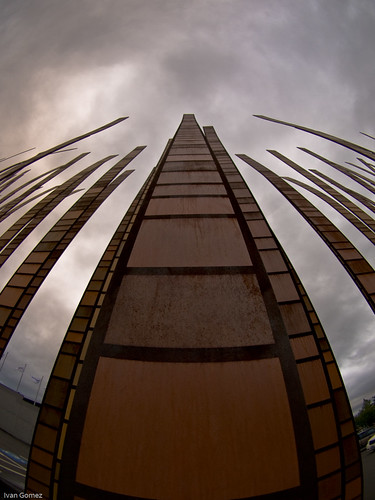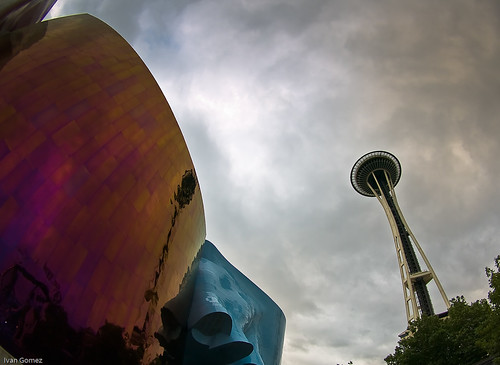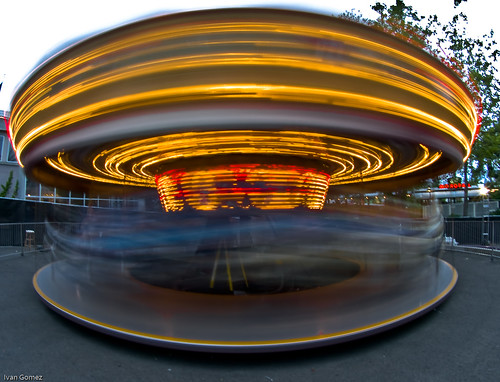At last I was able to put my new purchase for lenses with my new backpack the Think Tank 360. You can read that review here.
As far as the lense goes, I really like it and I would defintely recommend the purchase of a fish eye as part of your kit. Usually when I am having a photo only trip, I take 2 camera bodies with me. My Oly 410 and the Oly E-3. Most of the time I kept the fish eye lens in the 410 since I take advantage of the IS in the E3 for telephoto shots.
The most impressive thing about the lens is its sharpness and ability to capture lots of colors and dynamic range. I know this is also in due part of the body itself, but I haven't seen this tone range in any other of the Zuiko lenses. I guess it helps that its a prime lens as well. Here is an example...
This picture only has a little bit of retouching in Lightroom 2. One thing to note is taking pictures takes a little to get used to. You have to mind ALL of the space around the frame, being careful on not to include your own feet, a friend standing next to you, etc. Its almost as you can take a picture of the back of your head with this lens.
One of the objectives for this trip was to "overuse" my 8mm just to get the most out of it. From now on, I will always carry this lense with me but it will be reserved for special effects, panoramas, and force myself to first work with my other lens and then close a spot with this specific effect. I will try in the future to use this for panoramas to take advantage of the distortion or to fix it on Post Processing with the help of photoshop or PTLens . This lense if denitely not designed to replace your regular wide angle lense, but to bring out special effects and perspectives.
You can create different and eye-pleasing perspective with this lense, but one of the things I have learned is that with this type of distortion you really have to mind your surroundings and how you are standing in front of them, as all of this will get accentuated on the final exposure. Look at this example..
I should have stood right in front of the center of the middle lane, right now the picture shows an unbalance and an awkward distortion in the center lane, the parallel lanes and the pandas on the sides do not have the same level of distortion. Regardless of this, I think the colors were excellent
Here are some of the examples of the pics I liked and the effects you can manage..
 |   |
One of the things that really caught my eye was when shooting up to a structure, is amazing the amount of sky you can capture, this should lend itself really well for using HDR. (I will try this next time I am carrying my tripod). I then switched from my 420 to my E3 using the fisheye, IS helped me capture the carrousel movement by hand...
 |  |
Overall I really recommend using this lense, I would love to try this on panorama shots with a single shot covering a large amount of space, then removing the distortion with PTLens and see what happens..
The entire set of this pictures is here...










